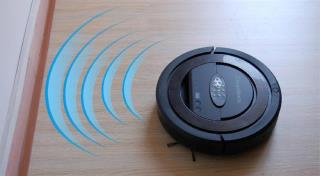How to Install Couch CMS 2.0 on a Debian 9 LAMP VPS
Using a Different System? Couch CMS is a simple and flexible, free and open source Content Management System (CMS) that allows web designers to desig
Couch CMS is a simple and flexible, free and open source Content Management System (CMS) that allows web designers to design beautiful web sites without any knowledge of PHP. With Couch CMS, web developers can take any of their static HTML and CSS only designs and transform them into a fully CMS managed web site with very little effort.
In this tutorial we are going to install Couch CMS 2.0 on a Ubuntu 16.04 LAMP VPS using Apache web server, PHP 7.0, and a MariaDB database.
We will start by adding a new sudo user.
First, log into your server as root:
ssh root@YOUR_VULTR_IP_ADDRESS
Add a new user called user1 (or your preferred username):
adduser user1
When prompted, enter a secure and memorable password. You will also be prompted for your "Full Name" and some other details, but you can simply leave them blank by pressing Enter.
Now check the /etc/sudoers file to make sure that the sudoers group is enabled:
visudo
Look for a section like this:
%sudo ALL=(ALL:ALL) ALL
This line tells us that users who are members of the sudo group can use the sudo command to gain root privileges. It should be uncommented by default so you can simply exit the file.
Next we need to add user1 to the sudo group:
usermod -aG sudo user1
We can verify the user1 group membership and check that the usermod command worked with the groups command:
groups user1
Now use the su command to switch to the new sudo user user1 account:
su - user1
The command prompt will update to indicate that you are now logged into the user1 account. You can verify this with the whoami command:
whoami
Now restart the sshd service so that you can login via ssh with the new non-root sudo user account you have just created:
sudo systemctl restart sshd
Exit the user1 account:
exit
Exit the root account (which will disconnect your ssh session)
exit
You can now ssh into the server instance from your local host using the new non-root sudo user user1 account:
ssh user1@YOUR_VULTR_IP_ADDRESS
If you want to execute sudo without having to type a password every time, then open the /etc/sudoers file again, using visudo:
sudo visudo
Edit the section for the sudo group so that it looks like this:
%sudo ALL=(ALL) NOPASSWD: ALL
Please note: Disabling the password requirement for the sudo user is not a recommended practice, but it is included here as it can make server configuration much more convenient and less frustrating, especially during longer systems administration sessions! If you are concerned about the security implications, you can always revert the configuration change to the original after you finish your administration tasks.
Whenever you want to log into the root user account from within the sudo user account, you can use one of the following commands:
sudo -i
sudo su -
You can exit the root account and return back to your sudo user account any time by simply typing:
exit
Before installing any packages on the Ubuntu server instance, we will first update the system.
Make sure you are logged in to the server using a non-root sudo user and run the following commands:
sudo apt-get update
sudo apt-get -y upgrade
Install the Apache web server:
sudo apt-get -y install apache2
Then use the systemctl command to start and enable Apache to execute automatically at boot time:
sudo systemctl enable apache2
sudo systemctl start apache2
Check your Apache default site configuration file to ensure that the DocumentRoot directive points to the correct directory:
sudo vi /etc/apache2/sites-enabled/000-default.conf
The DocumentRoot configuration option should look like this:
DocumentRoot "/var/www/html"
Now save and exit the file, and enable the mod_rewrite Apache module:
sudo a2enmod rewrite
We will restart Apache at the end of this tutorial, but restarting Apache regularly during installation and configuration is certainly a good habit, so let's do it now:
sudo systemctl restart apache2
We can now install PHP 7.0 along with all of the necessary PHP modules required by Couch CMS:
sudo apt-get -y install php php-gd php-mbstring php-common php-mysql libapache2-mod-php php-curl
Install MySQL database server:
sudo apt-get -y install mysql-server
During the MySQL server installation, make sure you enter a secure password for the MySQL root user. This root user is different to the root user in Ubuntu as it is only used for connecting to your database server with full privileges.
Start and enable MySQL server to execute automatically at boot time:
sudo systemctl enable mysql
sudo systemctl start mysql
Secure your MySQL server installation:
sudo mysql_secure_installation
When prompted, enter the password you created for the MYSQL root user during installation. Simply answer "Y" to all of the other yes/no questions as the default suggestions are the most secure options.
Log into the MySQL shell as the MySQL root user by running the following command:
sudo mysql -u root -p
To access the MySQL command prompt, simply enter the MySQL root password when prompted.
Run the following queries to create a MySQL database and database user for Couch CMS:
CREATE DATABASE couch_db CHARACTER SET utf8 COLLATE utf8_general_ci;
CREATE USER 'couch_user'@'localhost' IDENTIFIED BY 'UltraSecurePassword';
GRANT ALL PRIVILEGES ON couch_db.* TO 'couch_user'@'localhost';
FLUSH PRIVILEGES;
EXIT;
You can replace the database name couch_db and username couch_user with something more to your liking, if you prefer. Also, make sure that you replace "UltraSecurePassword" with an actually secure password.
Change your current working directory to the default web directory:
cd /var/www/html/
If you get an error message saying something like 'No such file or directory' then try the following command:
cd /var/www/ ; sudo mkdir html ; cd html
Your current working directory should now be: /var/www/html/. You can check this with the pwd (print working directory) command:
pwd
Now use wget to download the Couch CMS installation zip archive:
sudo wget https://www.couchcms.com/kachua/download.php?auth=agJmBvEk%2FIM8aSh4XkqV5fbIxR4ghkd6Gy%2F8eL4nFCUpzoFYvddT%7CbKoInr8INleUFM9lPDT05r0dEfTqzuhb%7C0%7C0%7C0%7C1%7Cbccc27bd8eade8876d3f486bac1f4ca9
Please note: You should definitely check for the most recent version by visiting the Couch CMS download page.
List the current directory to check that you have successfully downloaded the file:
ls -la
Let's give the zip file a simpler name:
sudo mv download.php* couchcms.zip
Then quickly install unzip so we can actually unzip the file:
sudo apt-get -y install unzip
Now uncompress the zip file:
sudo unzip couchcms.zip
Move all of the installation files to the web root directory:
sudo mv ./CouchCMS-2.0/* /var/www/html
Now change ownership of the web files to avoid any permissions problems:
sudo chown -R www-data:www-data *
Let's restart Apache again:
sudo systemctl restart apache2
We're now ready to move on to the final step.
To complete the Couch CMS installation, we need to edit the Couch CMS config file, so first make sure you are in the webroot and then rename the config file:
sudo mv ./couch/config.example.php ./couch/config.php
Next, open the config.php file:
sudo vi ./couch/config.php
Add the following values:
define( 'K_GMT_OFFSET', 0 );
define( 'K_DB_NAME', 'couch_db' );
define( 'K_DB_USER', 'couch_user' );
define( 'K_DB_PASSWORD', 'UltraSecurePassword' );
define( 'K_DB_HOST', 'localhost' );
define( 'K_PRETTY_URLS', 1 );
define( 'K_USE_CACHE', 1 );
define( 'K_EMAIL_TO', '[email protected]' );
define( 'K_EMAIL_FROM', '[email protected]' );
Once you have added the appropriate configuration values you can save and exit.
The final steps of the Couch CMS installation are really simple.
First visit the Couch CMS installation page in your browser:
http://YOUR_VULTR_IP_ADDRESS/couch
Or if you've already configured your Vultr DNS settings (and given it enough time to propagate) you can simply visit your domain instead:
http://YOUR_DOMAIN/couch
Simply enter the following details on the installation page:
Super-Admin Username: admin (or your preferred username)
Password: <your preferred password>
Email: <your email address>
Then click the "Install" button.
If the installation was successful, you should see a confirmation page that says Log in. Simply click Log in to continue.
You can now login to your Couch CMS admin panel.
If you haven't already set up your Vultr DNS, that should probably be your next step.
You are now ready to start adding content and configuring the look of your site. Be sure to check out the excellent Couch CMS documentation for more information about how to configure Couch CMS.
Remember that Couch CMS allows you to take your old HTML and CSS web sites and easily change them into fully managed CMS sites that even non-technical users can update for themselves. Unlike most other CMSes, Couch CMS allows you to convert your HTML sites without any server-side programming.
Using a Different System? Couch CMS is a simple and flexible, free and open source Content Management System (CMS) that allows web designers to desig
Using a Different System? Couch CMS is a simple and flexible, free and open source Content Management System (CMS) that allows web designers to desig
Вештачка интелигенција није у будућности, она је овде управо у садашњости. У овом блогу Прочитајте како су апликације вештачке интелигенције утицале на различите секторе.
Да ли сте и ви жртва ДДОС напада и збуњени сте методама превенције? Прочитајте овај чланак да бисте решили своја питања.
Можда сте чули да хакери зарађују много новца, али да ли сте се икада запитали како зарађују толики новац? Хајде да причамо.
Да ли желите да видите револуционарне изуме Гугла и како су ти изуми променили живот сваког људског бића данас? Затим читајте на блогу да бисте видели Гооглеове изуме.
Концепт самовозећих аутомобила који путују на путеве уз помоћ вештачке интелигенције је сан који већ неко време имамо. Али упркос неколико обећања, њих нема нигде. Прочитајте овај блог да сазнате више…
Како се наука развија великом брзином, преузимајући многе наше напоре, расте и ризик да се подвргнемо необјашњивој сингуларности. Прочитајте шта би сингуларност могла да значи за нас.
Методе складиштења података су се развијале можда од рођења података. Овај блог покрива еволуцију складиштења података на основу инфографике.
Прочитајте блог да бисте на најједноставнији начин упознали различите слојеве у архитектури великих података и њихове функционалности.
У овом дигиталном свету, паметни кућни уређаји постали су кључни део живота. Ево неколико невероватних предности паметних кућних уређаја о томе како они чине наш живот вредним живљења и једноставнијим.
Недавно је Аппле издао мацОС Цаталина 10.15.4 додатак за исправку проблема, али изгледа да ажурирање изазива више проблема који доводе до квара Мац машина. Прочитајте овај чланак да бисте сазнали више



